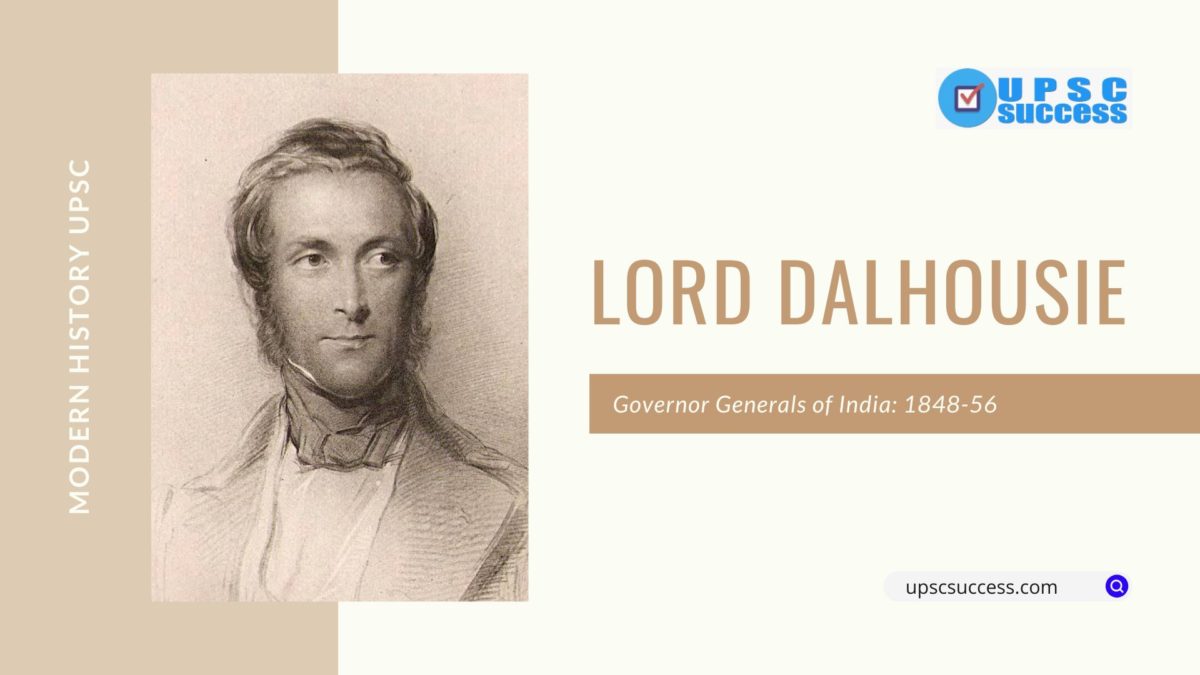Contents
Lord Dalhousie, Governor-General of India from 1848 to 1856 was born on 22 April 1812. He introduced the Doctrine of Lapse policy which turned out to be one of the major causes of the Revolt of 1857. This article helps you learn more about the policies implemented by Lord Dalhousie in India.
He introduced passenger trains in railways, the electric telegraph and uniform postage, which he described as the “three great engines of social improvement”. He also founded the Public Works Department in India.
| Full name: | James Andrew Broun-Ramsay |
| Born: | 22 April 1812, Dalhousie Castle Hotel And Aqueous Spa, United Kingdom |
| Died: | 19 December 1860, Dalhousie Castle Hotel And Aqueous Spa, United Kingdom |
| Organizations founded: | Tamil Nadu Public Works Department, Central Public Works Department |
Major Works:
• 2nd Anglo Sikh War (1848-49) & Punjab annexation.
• Annexation of lower Burma or Pega (1852)
• 2nd Anglo Burmese War
• Santhal Uprisings
• Doctrine of Lapse and annexation of Satara (1848), Jaitpur & Sambhalpur (1849), Udaipur (1852), Jhansi (1853), Nagpur & Awadh (54 & 56)
• Bombay & Thane Railway
• English schools and college. (Wood’s despatch)
• Telegraph lines from Bombay to Calcutta & Madras to Peshawar.
• Ganga Canal declared open.
• Widow Remarriage Act 1856
• Public Works Dept in every province.
• Abolished titles & pensions.
• Engineering College at Roorkee
FAQs
Lord Dalhousie, Governor-General of India from 1848 to 1856 was born on 22 April 1812. He introduced the Doctrine of Lapse policy which turned out to be one of the major causes of the Revolt of 1857. This article helps you learn more about the policies implemented by Lord Dalhousie in India.
Lord Dalhousie is known as the Father of Indian Railways.
Lord Dalhousie, the Governor General of India earned the title of “Maker of Modern India”. He introduced several reforms in India which led the way for the modernisation of India, the reason due to which he got the title of “Maker of Modern India”.
Lord Dalhousie’s annexation policy, known as the Doctrine of Lapse, was widely adopted during his time as India’s Governor-General, from 1848 to 1856. It was employed as an administrative policy to expand British aristocracy.

